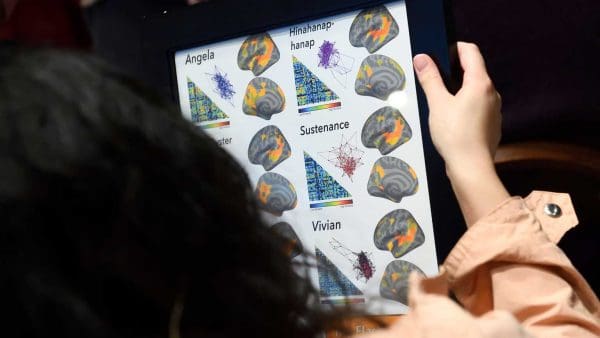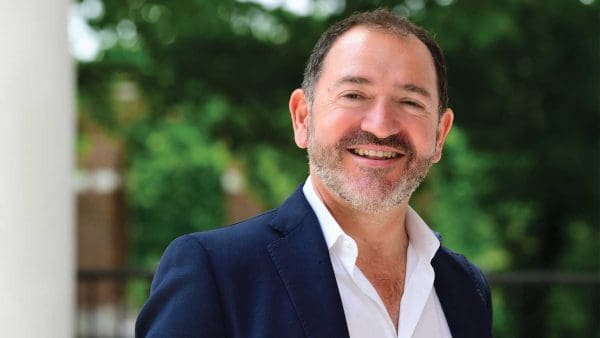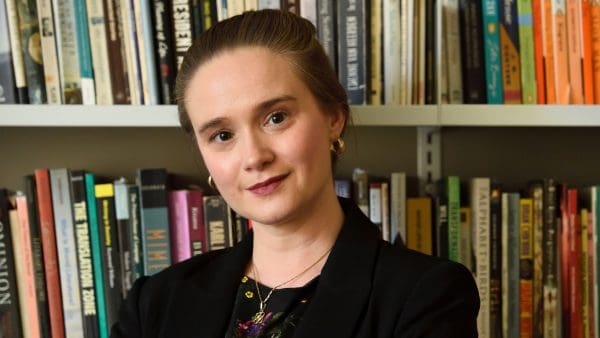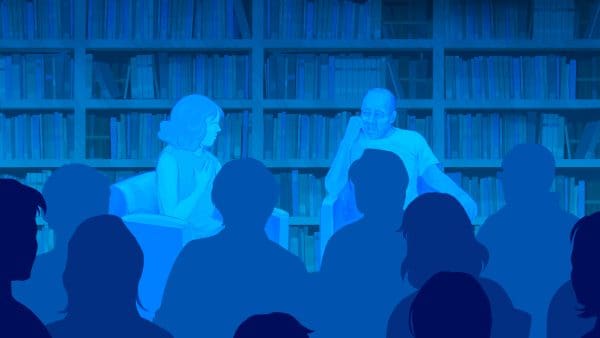Thirty years ago, Johns Hopkins physicists led a crucial mission to space, gathering never-before-seen data that helps explain the mysteries of the universe. The 16-day project involved a telescope designed and built at Hopkins, which could capture ultraviolet emissions by stars, quasars, and galaxies. The mission, named Astro-2, helped unlock the processes that power black holes and the existence of intergalactic medium, a basic prediction of the Big Bang theory.
It almost didn’t happen at all.
A few years earlier, Astro-2 had been canceled by the National Aeronautics and Space Administration (NASA) because of budgetary pressures. The story of how this ambitious endeavor came together, and how it was saved, highlights the enduring scientific legacy of these Hopkins scientists.
“The UV data we captured is still the main data available for astronomers and physicists in that spectral range,” says William Blair, research professor in the William H. Miller III Department of Physics and Astronomy and a key leader in the effort. “They still rely on the archive to this day.”
The space shuttle Endeavour launches on the Astro-2 mission on March 2, 1995, with HUT on board. The data produced by HUT helped researchers see details of ultraviolet emissions from galaxies, supernovas, and black holes, ultimately contributing to more than 180 papers.
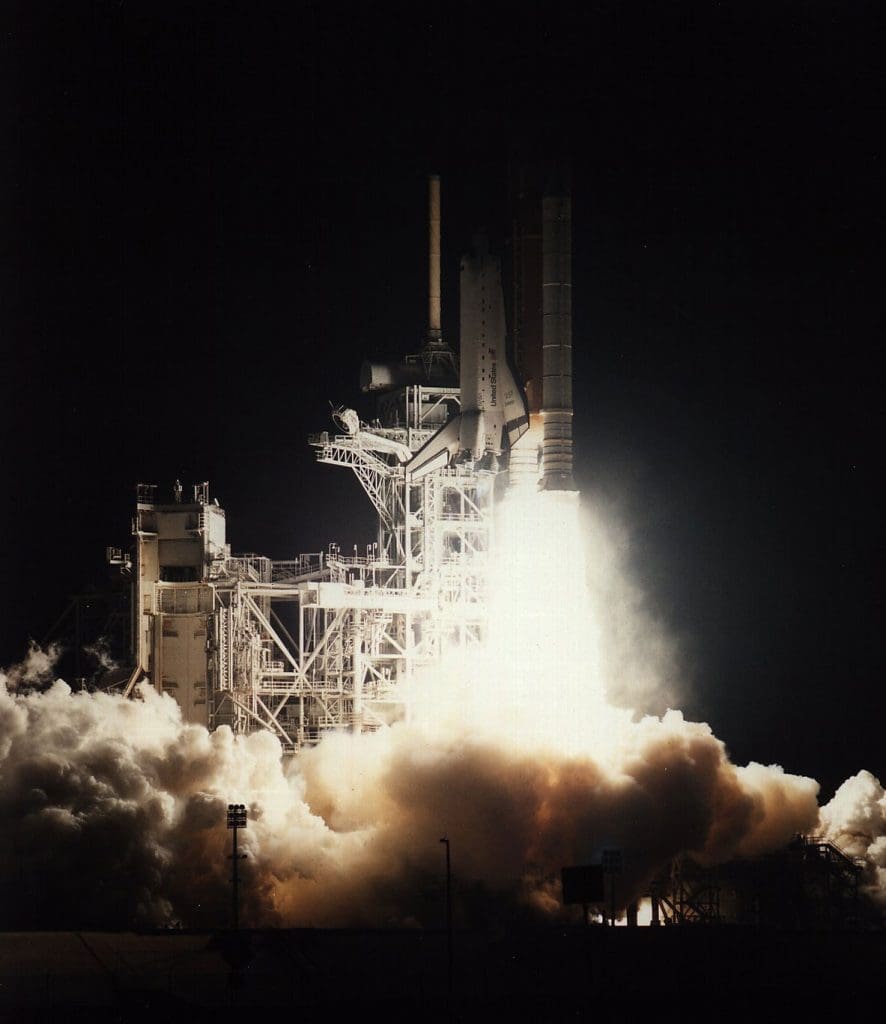
An ambitious beginning
As NASA’s space shuttle program ramped up in the 1970s, the agency put out a call: it needed payloads to fill out its missions. Late Hopkins professor Arthur F. Davidsen had a pitch: astrophysicists needed new instruments to study the universe. Hopkins scientists could help create those tools.
NASA signed off and development of three instruments able to capture ultraviolet spectra began. The Johns Hopkins Applied Physics Laboratory in Laurel, Maryland, would be responsible for the Hopkins Ultraviolet Telescope, or HUT, the largest of the three.
From the beginning, the scientific possibilities were obvious. “We were probing a wavelength range that hadn’t been explored,” says Harry Ferguson, who worked on the Astro projects while pursuing his PhD in the Hopkins Physics and Astronomy department, graduating in 1990. With HUT, “we could look at a bunch of objects and see totally different things.”
The first Astro mission was scheduled to launch in March 1986, to coincide with Halley’s Comet’s journey out of the solar system. Then the Challenger space shuttle exploded, grounding NASA’s fleet for years. The agency, facing lengthy safety inquiries and compressed budgets, decided to shrink HUT’s mandate—it would only complete a single mission instead of the three originally planned.
By the time Astro-1 launched, Ferguson had completed his PhD and moved to Cambridge, England.
Bill Blair (center) speaks during the Astro Spacelab Missions Anniversary Celebration held June 19-20, 2025, at the U.S. Space and Rocket Center in Huntsville, Alabama.
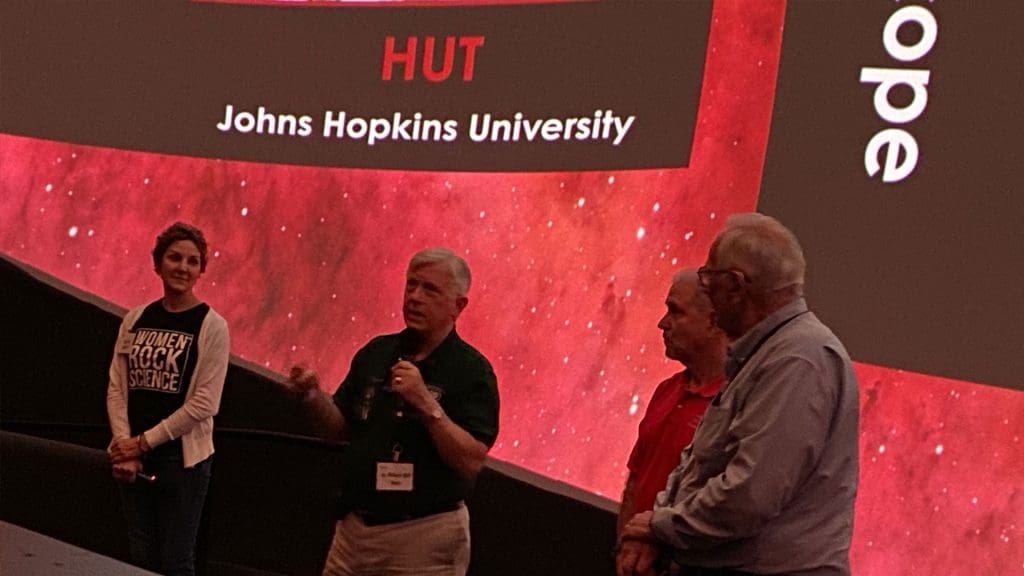
Overcoming obstacles
On December 2, 1990, about two dozen Hopkins scientists gathered excitedly at the Marshall Space Flight Center in Huntsville, Alabama. After years of delays and false starts, HUT was launching into space.
The euphoria was short-lived. Hours into the mission, the Spacelab Instrument Pointing System, which guided the telescopes into position, broke. Soon after, both computers on the shuttle shut down. HUT was in space, but it couldn’t be directed toward the list of targets meticulously mapped out over the last several months.
The ground team worked feverishly for three days to devise a workaround: They would calculate where the telescopes should point; the payload specialists on board— including the late Sam Durrance, then a principal research scientist in the William H. Miller III Department of Physics and Astronomy—would use guide stars to manually move the machines into position.
Gerard Kriss, a Hopkins researcher at the time, was in Huntsville as data gathered finally began beaming to Earth. “There were a number of really successful observations,” he says. But the 12-hour shifts, extended by hour-long handoffs on each end, were grueling. “There was lots of adrenaline that kept us going by the end,” he says.
‘Exciting science,’ and a pitch for another mission
In the weeks and months after Astro-1, Hopkins professors began to review the treasure trove of data they’d collected, which would appear in more than 120 academic papers. It was thrilling. But Blair and others knew they could learn more from another mission.
“We had enough data to know there was a lot of exciting science to be done in [the UV] spectral range,” he says. “We were licking our chops to get more.” Davidsen launched a lobbying campaign, pitching Maryland Sen. Barbara Mikulski (D) and others on the possibilities of Astro-2. Mikulski, who chaired the committee responsible for NASA’s funding, was convinced, and Astro-2 was funded.
As they prepared for the next mission, Hopkins scientists got busy improving HUT’s reflectivity in the ultraviolet, allowing scientists to gather much clearer and more detailed data. The planning team began developing a new list of targets for each of the three telescopes.
As the team prepared for Astro-2, everyone was sorted into specialized roles: communication with the astronauts; updating the planning documents; ensuring that data was collected and saved.
A dream mission
Mary Romelfanger, who joined the Hopkins physics department in 1988 as a computer programmer, was given a crucial role: trouble-shooter. “Whatever could go wrong, I had to know the system and help figure it out,” she says.
It was a nerve-wracking role, especially given the challenges of Astro-1. But as the countdown began for the launch early on March 2, 1995, good omens began to stack up. The clouds that had loomed for days, imperiling the mission’s launch, cleared about an hour before takeoff. Once the shuttle was in orbit, the telescopes came online as expected, moving seamlessly from target to target.
“With Astro-2, things happened the way they were supposed to,” Blair says. As his team began to move through the telescope calibrations, “it was evident that things were going to go smoothly.” That good luck stayed. Over the course of the mission, 385 shuttle maneuvers were made to point the telescopes at about 250 unique targets.
“It was like the dream mission that everyone had hoped for,” says Van Dixon, who earned his PhD in physics and astronomy at Hopkins in 1996. “We got a tremendous amount of data, much higher resolution than before. It was a triumph the whole way through.”
‘Seminal for our careers’
The glow around Astro-2 lasted beyond the mission. The data produced by HUT helped researchers see the ultraviolet emissions from galaxies, supernovas, and black holes in much greater detail.
For example, Astro-1 provided Ferguson with faint spectra from the extremely luminous active galactic nuclei known as quasars. With Astro-2, he could see the ionized helium around the quasar. “We knew we had so much,” Ferguson says. “We could see it. That was really exciting.”
Ultimately, more than 180 papers would be written on the data gathered during Astro-2.
Alumni of the Astro missions continue to lead in space discovery in positions at the Goddard Space Flight Center and the Space Telescope Science Institute. They helped develop the Far Ultraviolet Spectroscopic Explorer, which observed the ultraviolet spectra pulsing through the universe in even more granular detail, and worked on the Hubble and James Webb Space Telescope projects.
“A lot of us that worked on HUT looked at it as seminal for our careers,” Blair says. “The event of a lifetime.”
And for many members of the close-knit team, who gathered in September at the Hopkins Bloomberg Center for Physics and Astronomy to celebrate Astro-2’s 30th anniversary, the impact of this decade of scientific discovery was more personal, too. “It made me a little more fearless diving into things I didn’t really understand,” Ferguson says. “I had to do things that were out of my previous experience, and that helped me my whole career.”

